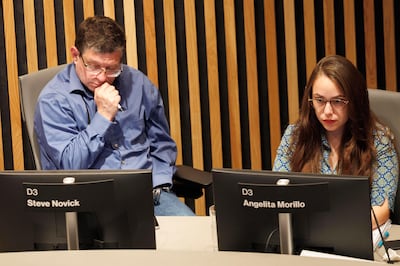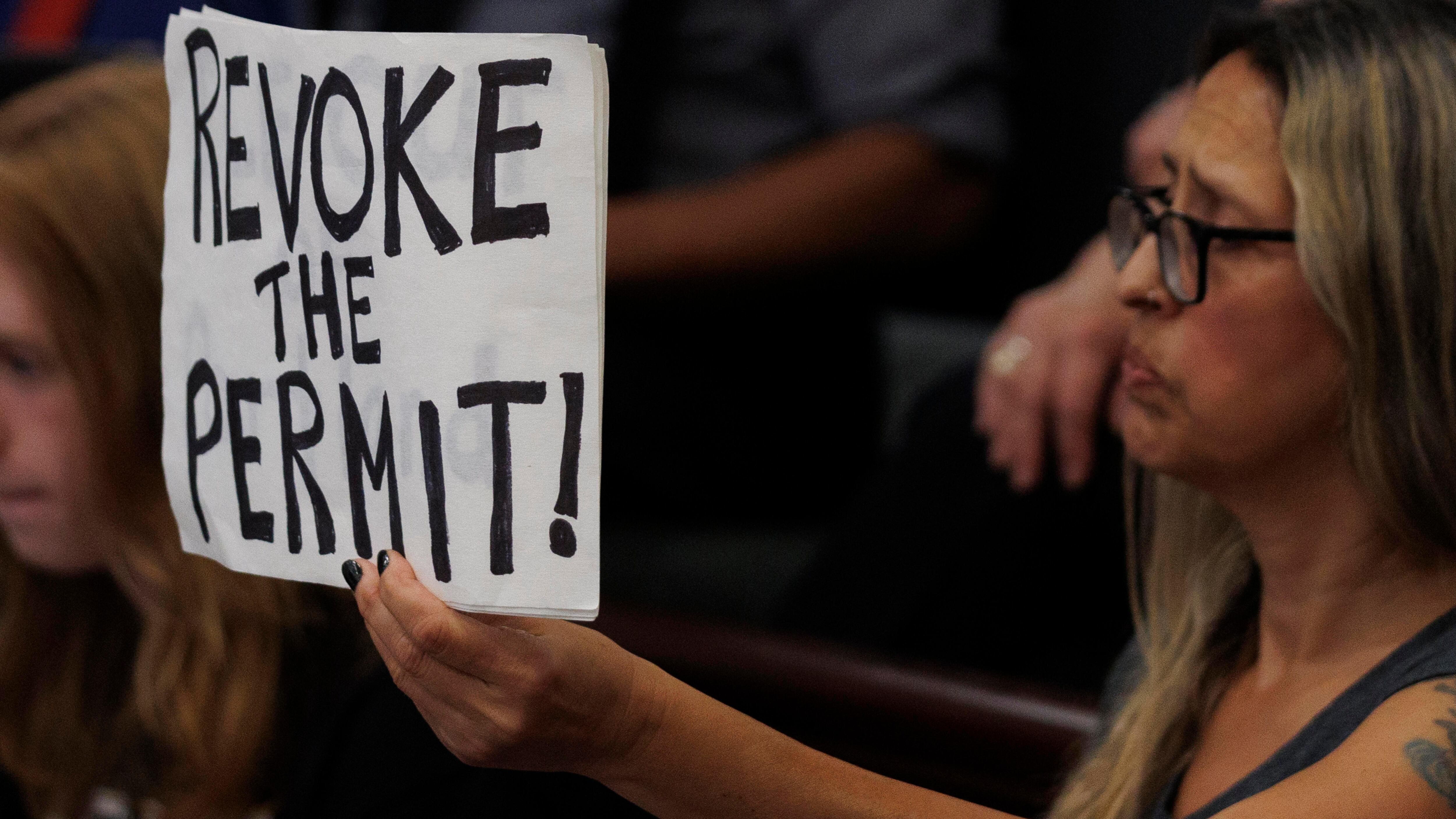The Portland City Council and the Trump administration are engaged in brinkmanship over the operation of a U.S. Immigration and Customs Enforcement facility in the South Waterfront.
In a remarkable juxtaposition July 8, city councilors told a packed hearing that they would consider revoking ICE’s permit to operate its South Portland facility, even as White House border czar Tom Holman went on Fox Business to announce a visit to the site to “ramp up” a crackdown on protesters.
City Councilor Angelita Morillo took note of the convergence. “While this committee was happening,” she said to a packed chamber, “Tom Homan, the director of ICE, also stated that the federal government has turned its sights on Portland. We are going to have to be incredibly nimble in how we address this.”
Indeed, Homan told Fox Business that he would personally visit Portland in response to protesters who have confronted ICE agents at the facility around the clock since early June. “I’m going out there. They are not going to bully us,” he said. “For those who say they want to keep ICE out of the city, good luck with that.”
Homan hasn’t announced a date for his visit, and local Democratic officials don’t know if and when he’s coming.
Still, the exchange illustrates the stakes in coming weeks in the South Waterfront, where the federal government wants to demonstrate it can carry out its deportation campaign in hostile territory while city officials search for a legal tactic that could expel the immigration agents.
It’s an asymmetrical conflict. Portlanders who saw President Donald Trump’s crackdown on the George Floyd protests and riots vividly remember his willingness to make an example of cities where dissidents damage federal property. And the sight of National Guard troops marching through MacArthur Park in Los Angeles suggests the president has not lost his appetite for a show of force.

Councilor Steve Novick said that was no reason to dodge the issue. “I don’t think that there’s anything to be gained by appeasement against this administration,” he said. “We should not be trying to figure out how to keep our heads low and avoid the attention of this administration.”
For nearly two hours last Tuesday, the City Council’s Community and Public Safety Committee heard testimony from Portland residents asking the council to revoke the 2011 conditional-use permit that has allowed ICE to use its building for administrative and detention purposes.
City officials have long maintained that the permit tied their hands unless ICE was breaking the rules it had agreed to. But KPTV reported July 2 that ICE had likely violated the terms of that agreement more than two dozen times by holding detainees for more than 12 hours.
“Our values of sanctuary and humanity are under siege,” testified Michelle Dar, who added that federal agents’ armed actions threatened everyone’s safety, not just that of immigrants. Almost as frequent were those who noted that the South Waterfront area abutting ICE include a subsidized apartment building and the Cottonwood School, and that direct harm from munitions, tear gas and noise was incessant. (That same day, a resident of the building filed suit against the city but blamed the protesters, not ICE, for the din outside her window.)
Kimberly, a documentary photographer, held up some two dozen 8 x 10 color photographs she had made in the past weeks, to show the committee the intensity of the violence of ICE’s responses to demonsatrators: tear gas, “targeted arrests,” and the use of less-lethal munitions.
Federal officials have cast the conflict in starkly different terms. On July 11, Homeland Security Secretary Kristi Noem said that Portland anarchists and antifascists were posting the names, faces and home addresses of ICE employees in a campaign of intimidation. At the city hearing, a handful of people also blamed Antifa for the South Waterfront conflict.
But by the end of the testimony, city councilors appeared open to the idea of revoking the permit.
“If we allow ICE to continue to operate when they have violated their permits, that means that anything becomes permissible moving forward,” said Morillo. “And so, for me, that change in information has changed the calculation.”
“This is an assault on our democracy as a whole,” Novick added. “The assault on immigrants is the tip of the spear. We’re all trying to figure out what the hell to do about it.”
Councilor Eric Zimmerman offered one clue. He said the City Attorney’s Office was working on a memo about the city’s legal options regarding the ICE facility, and that Oregon Attorney General Dan Rayfield and all 36 district attorneys in the state had been invited to contribute their advice.
As of the weekend, however, one thing had changed on South Moody Avenue: the tent that served as headquarters for the protest had been swept out of a gravel lot. City officials did not respond to a request for comment about who had removed it.

